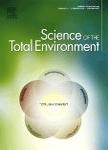版权所有:内蒙古大学图书馆 技术提供:维普资讯• 智图
内蒙古自治区呼和浩特市赛罕区大学西街235号 邮编: 010021

作者机构:Engineering Research Center of Watershed Protection and Green Development University of Guangxi Guilin University of Technology Guilin541006 China Guangxi Key Laboratory of Environmental Pollution Control Theory and Technology Guilin University of Technology Guilin541006 China
出 版 物:《Science of the Total Environment》 (Sci. Total Environ.)
年 卷 期:2025年第965卷
页 面:178692页
核心收录:
学科分类:0830[工学-环境科学与工程(可授工学、理学、农学学位)] 08[工学] 0804[工学-仪器科学与技术] 0805[工学-材料科学与工程(可授工学、理学学位)] 0813[工学-建筑学] 0812[工学-计算机科学与技术(可授工学、理学学位)]
基 金:This study was supported by the National Key Research and Development Program of China ( 2022YFF1300702 ) the National Natural Science Foundation of China ( U2344201 ) and the Guangxi Key R&D Program ( Guike-AB22035058 )
主 题:Limestone
摘 要:Soil desiccation cracking, which leads to increased water loss and the destruction of soil integrity, can significantly exacerbate drought conditions and soil degradation. Biochar derived from organic waste can effectively reduce soil desiccation cracking as a sustainable soil amendment. However, the effects of biochar on the entire process of rainfall infiltration, soil water evaporation, and subsequent desiccation cracking remain unclear. In this study, simulated rainfall-evaporation experiments were conducted on limestone soil in karst areas with severe water leakage and susceptibility to cracking, using improved soil with corn straw biochar (CSB), rice husk biochar (RHB), and bagasse biochar (BB) at 0 %, 2 %, 4 %, and 6 % application rates, respectively. Surface runoff (SR) and underground percolation (UP) were collected during rainfall events, whereas soil water storage (SWS) was measured after the rainfall events. Each sample was weighed at intervals during evaporation (3–5 days) to monitor the soil water content, and the corresponding crack morphology was photographed. The results indicated that SWS increased by 6.23 %–35.14 % while UP decreased by 11.39 %–49.95 % for the different types of biochar compared to the control. Biochar application increased the evaporation rate, but reduced the evaporation loss rate of soil water, allowing the soil to maintain a high water content for a longer evaporation period. The application of biochar inhibited crack propagation and reduced the final cracking degree, particularly when BB was applied. The biochar-amended soil had a smaller had lower crack ratio (Rcr), mean crack width (wcr), box-counting fractal dimension (Db), and crack network connectivity (Cnet) compared to the control. Based on our results, we suggest the application of 6 % CSB or BB to limestone soils in karst areas. This study provides a scientific basis for the use of biochar to increase soil water content and minimise cracking. © 2025 Elsevier B.V.